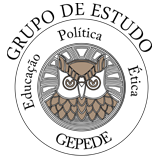

Resumen: En el presente trabajo nos centraremos en cierta vinculación, que el propio Searle destaca (1995), entre la “teoría cúmulo” de los nombres propios – desarrollada en Speech Acts (1968) y en Proper Names (1958) –, y su posterior teoría de la realidad social para, posteriormente, referimos a la teoría de los designadores rígidos propuesta por Saúl Kripke en su célebre Naming and Necessity (1981). A la hora de centrarnos en la comprensión de conceptos tales como, “matrimonio”, “dinero”, “capitalismo” o “modernidad”, no se produce un regreso infinito o circularidad: las definiciones no son tautológicas; no decimos, por ejemplo, “un matrimonio es un matrimonio”, o “dinero es todo aquello que es dinero”. Consideramos conveniente, antes bien, tratar a las ´expresiones de género institucional´ – EGI – como poseyendo un tipo de rigidez en su referencia. Si bien nos detendremos con mayor detalle en estas problemáticas, resultará necesario realizar una aclaración preliminar respecto al modo en que Searle concibe el lenguaje, nos referimos a su punto de vista naturalista. El lenguaje no es meramente un conjunto de enunciados sino que se inscribe en nuestra herencia biológica.
Palabras clave: Nombres propios; Teoría cúmulo; Designador rígido; Realidad institucional; Naturalismo.
Abstract: In the present work we will focus on a certain link, which Searle himself highlights (1995), between the “cumulative theory” of proper names – developed in Speech Acts (1968) and Proper Names (1958) –, and his later theory of the social reality for, later, will refer to the theory of the rigid designators proposed by Saul Kripke in his famous Naming and Necessity (1981). At the time of focusing on the understanding of concepts such as “marriage”, “money”, “capitalism” or “modernity”, there is no infinite return or circularity: the definitions are not tautological; we do not say, for instance, “a marriage is a marriage”, or “money is all that is money”. We consider it advisable, rather, to treat the ‘institutional gender expressions’ – IGE – as having a kind of rigidity in their reference. Although we will dwell in more detail on these problems, it will be necessary to make a preliminary clarification regarding the way in which Searle conceives language; we refer to his naturalistic point of view. Language is not merely a set of statements but is inscribed in our biological heritage.
Keywords: Proper names; Cumulus theory; Rigid designator; Institutional reality; Naturalism.